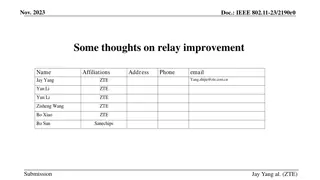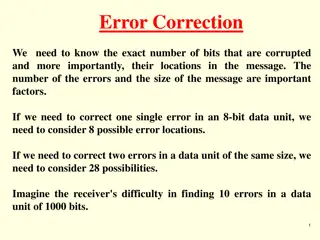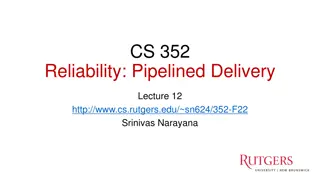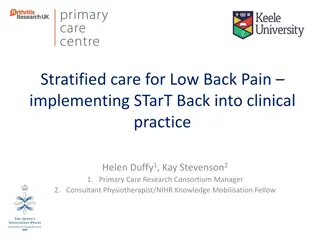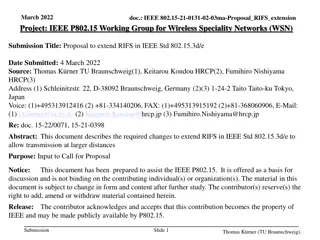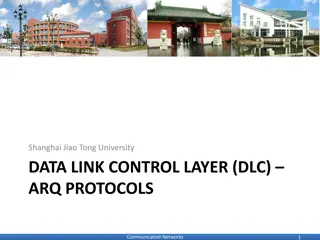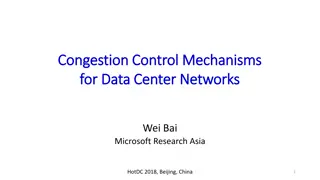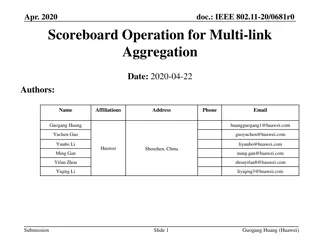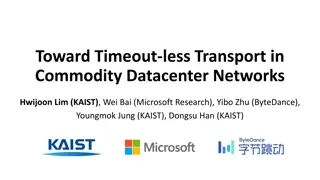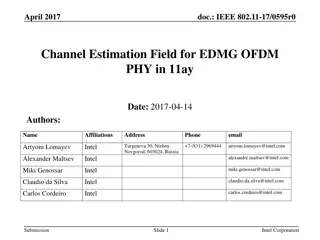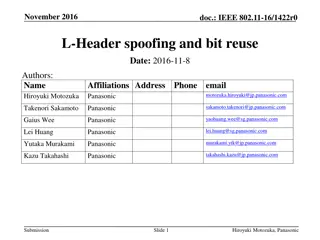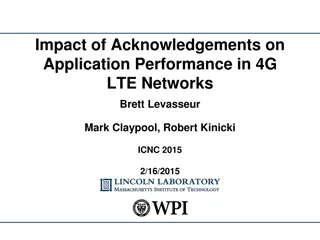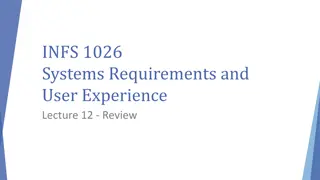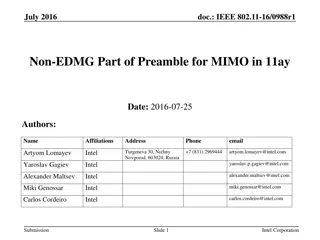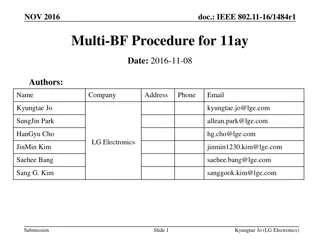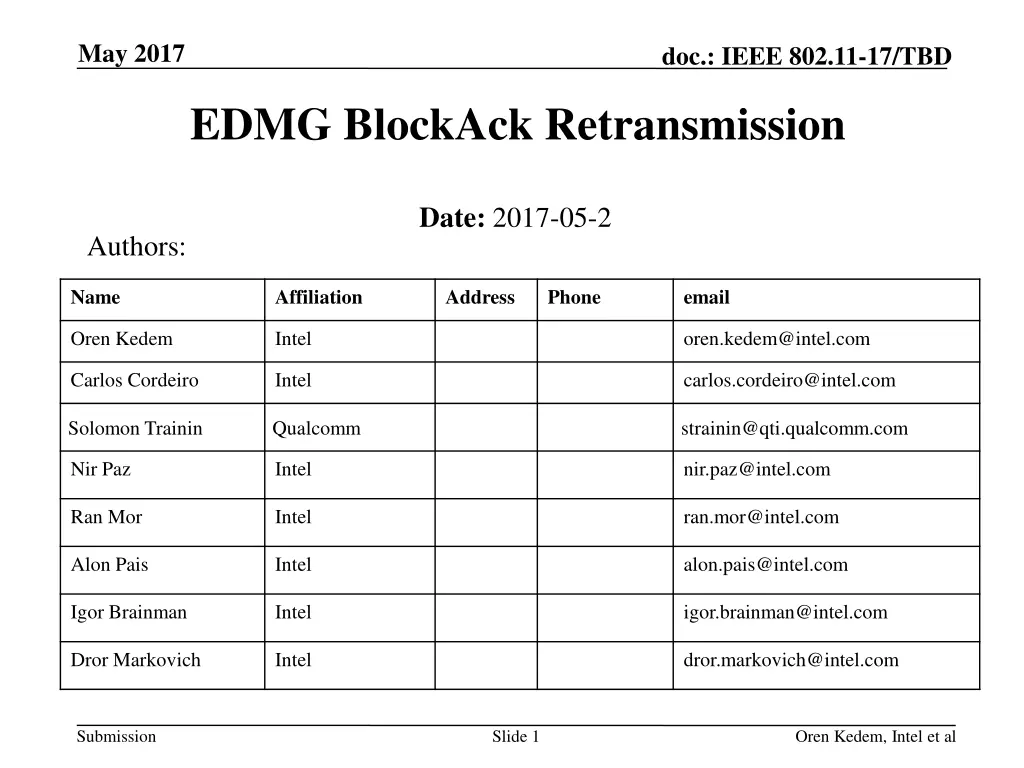
EDMG BlockAck Retransmission Rules for Higher Throughput
Explore the proposed relaxation of EDMG retransmission rules in IEEE 802.11-17/TBD document, aiming to enhance throughput and lower device costs. The document addresses the specific behavior and challenges faced by DMG STAs regarding MPDU retransmissions, suggesting improvements to align with HT/VHT STAs. Learn about the suggested changes for EDMG STAs transmitting new and retransmitted MPDUs while maintaining Window Size agreements.
Download Presentation

Please find below an Image/Link to download the presentation.
The content on the website is provided AS IS for your information and personal use only. It may not be sold, licensed, or shared on other websites without obtaining consent from the author. If you encounter any issues during the download, it is possible that the publisher has removed the file from their server.
You are allowed to download the files provided on this website for personal or commercial use, subject to the condition that they are used lawfully. All files are the property of their respective owners.
The content on the website is provided AS IS for your information and personal use only. It may not be sold, licensed, or shared on other websites without obtaining consent from the author.
E N D
Presentation Transcript
May 2017 doc.: IEEE 802.11-17/TBD EDMG BlockAck Retransmission Date: 2017-05-2 Authors: Name Affiliation Address Phone email Oren Kedem Intel oren.kedem@intel.com Carlos Cordeiro Intel carlos.cordeiro@intel.com Solomon Trainin Qualcomm strainin@qti.qualcomm.com Nir Paz Intel nir.paz@intel.com Ran Mor Intel ran.mor@intel.com Alon Pais Intel alon.pais@intel.com Igor Brainman Intel igor.brainman@intel.com Dror Markovich Intel dror.markovich@intel.com Submission Slide 1 Oren Kedem, Intel et al
May 2017 doc.: IEEE 802.11-17/TBD Purpose and definitions Purpose relaxation to EDMG retransmission rules to allow more throughput and reduce device cost Submission Slide 2 Kedem Oren, Intel et al
May 2017 doc.: IEEE 802.11-17/TBD DMG retransmission rules Below is DMG retransmission rules as indicated in REVmc 10.24.7.7 Originator s behavior An originator that is a DMG STA shall transmit MPDUs sent under a BA agreement such that: MPDUs that need to be retransmitted are transmitted first, in sequential order of sequence number, starting from the oldest MPDU that needs to be retransmitted MPDUs that are being transmitted for the first time are sent after any MPDUs that need to be retransmitted, in sequential order of sequence number, starting from the oldest MPDU that has not been transmitted MPDUs are transmitted with the Ack Policy subfield set to Block Ack if the A-MPDU that contains them is followed after SIFS or RIFS by another A-MPDU Submission Slide 3 Kedem Oren, Intel et al
May 2017 doc.: IEEE 802.11-17/TBD Problem Statement MPDUs retransmission typically occur SIFS after BACK is received Since device is not capable to retrieve all retransmitted MPDUs from host, common implementation is to store it in device memory. To achieve high throughput, large memory is required. EDMG throughput is increased compared to DMG, hence higher memory size will be required. Large memory increase the device cost. This limitation is only for DMG STA. HT/VHT STA doesn t need to comply with the above rules. Receiver can handle the reordering without this limitation Submission Slide 4 Kedem Oren, Intel et al
May 2017 doc.: IEEE 802.11-17/TBD Suggested Improvement Like HT/VHT STA, EDMG STA could transmit to another EDMG STA new transmitted MPDUs before retransmitted MPDUs while keeping the Window Size agreement In case EDMG STA is originator that sent MPDUs to DMG Responder STA, it shall follow the DMG retransmission rules. Submission Slide 5 Kedem Oren, Intel et al
May 2017 doc.: IEEE 802.11-17/TBD Example1 current behavior Originator Upper Layer Responder Originator Memory = 1,2,3,4 T1a - MPDU delivery time over the host interface T2a - MPDU delivery time over the host interface T1 - A-MPDU1 transmission time Memory = 1,2,3,4,5,6,7,8 Tr Originator acknowledgement response time Memory = 3,5,6,7,8 T2 - A-MPDU2 transmission time Memory = 8 Memory = Empty Submission Slide 6 Kedem Oren, Intel et al
May 2017 doc.: IEEE 802.11-17/TBD Example2 Suggested improvement Originator Upper Layer Responder Originator Memory = 1,2,3,4 T1a - MPDU delivery time over the host interface T1 - A-MPDU1 transmission time T2a - MPDU delivery time over the host interface Memory = 5,6,7,8 Tr Originator acknowledgement response time T2 - A-MPDU2 transmission time Memory = Empty T3a - MPDU delivery time over the host interface Memory = 3 Memory = Empty Submission Slide 7 Kedem Oren, Intel et al
May 2017 doc.: IEEE 802.11-17/TBD Impact on Receiver DMG receiver should be ready for the worse case in which retransmitted MPDUs were dropped. Hence there shouldn t be functional impact on receiver capabilities. In below example, the receiver capabilities in DMG/EDMG retransmission are the same DMG Retransmission Suggested EDMG Retransmission Responder Responder Originator Originator There might be additional latency of forwarding MPDU 4,5,6,7 until MPDU3 is received Submission Slide 8 Kedem Oren, Intel et al
May 2017 doc.: IEEE 802.11-17/TBD Straw Poll Do you agree with the following changes: 10.24.7.7 Originator s behavior Change the second to last paragraph as follows An originator that is a DMG STA shall transmit MPDUs sent under a BA agreement such that: If the originator or the recipient are a non-EDMG STA: MPDUs that need to be retransmitted are transmitted first, in sequential order of sequence number, starting from the oldest MPDU that needs to be retransmitted MPDUs that are being transmitted for the first time are sent after any MPDUs that need to be retransmitted, in sequential order of sequence number, starting from the oldest MPDU that has not been transmitted MPDUs are transmitted with the Ack Policy subfield set to Block Ack if the A-MPDU that contains them is followed after SIFS or RIFS by another A-MPDU Submission Slide 9 Kedem Oren, Intel et al
May 2017 doc.: IEEE 802.11-17/TBD 10.24.7.6.2 Operation for each received Data frame 2) Pass MSDUs or A-MSDUs up to the next MAC process if they are stored in the buffer in order of increasing value of the Sequence Number subfield starting with the MSDU or A-MSDU that has SN=WinStartB or if SN>WinStartB, the STA is a non-EDMG STA, and one of the following conditions is met: i) The MPDU is received as non-first frame in the A-MPDU; the bit at position SN=WinStartR 1 is set to 1; and all delimiters between the received MPDU and the preceding MPDU (SN=WinStartR 1) are valid. ii) The MPDU is received as first frame in the A-MPDU; the A-MPDU is received in SIFS or RIFS after an A-MPDU or in SIFS after transmission of a BlockAck frame; the bit at position SN=WinStartR 1 is set to 1; and all delimiters after the MPDU(SN=WinStartR 1) in the preceding A-MPDU are valid. iii) The MPDU is received in SIFS or RIFS after an A-MPDU or in SIFS after transmission of a BlockAck frame; the bit at position SN=WinStartR 1 is set to 1; and all delimiters after the MPDU (SN=WinStartR 1) in the preceding A-MPDU are valid. iv) The MPDU is received as first frame in the A-MPDU; the A-MPDU is received in SIFS or RIFS after an MPDU or in SIFS after transmission of an Ack frame; and the bit at position SN=WinStartR 1 is set to 1. v) The MPDU is received in SIFS or RIFS after the preceding MPDU or in SIFS after transmission of an Ack frame; and the bit at position SN=WinStartR 1 is set to 1. This process is continued sequentially until there is no buffered MSDU or A-MSDU for the next sequential value of the Sequence Number subfield Submission Slide 10 Kedem Oren, Intel et al
May 2017 doc.: IEEE 802.11-17/TBD BACKUP Submission Slide 11 Kedem Oren, Intel et al

